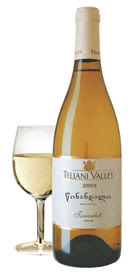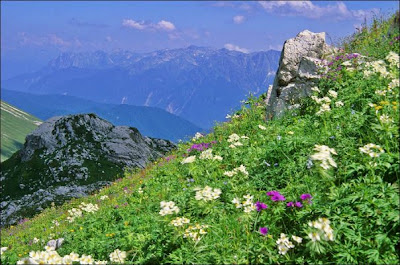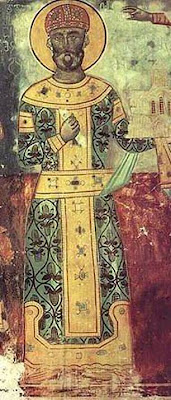
Since the 1080s the Kingdom of Georgia had been a tributary of the empire of the
Seljuq Turks. In this dark time, known as the Great Turkish Onslaught (
didi turkoba), young King David IV (left and below) decided he had had enough. He determined to bring order to the lawless land, reign in the unsubmissive feudal lords, centralize the state administration and build an army which could drive the Turks from Georgia and indeed the whole Caucasus.
While the Turks were dealing with the First Crusade, King David gathered his forces, consisting not only of ethnic Georgians but also
Kipchak and
Alan nomads and "Franks" from Western Europe. Between 1089 and 1100, King David organized cadres of loyal troops to restore order and destroy isolated enemy outposts. He resettled devastated regions, revived the major cities, ceased paying the annual tribute to the Seljuqs and stopped their seasonal migration into Georgia. (At the same time he rejected the Byzantine title of
panhypersebastos, roughly translated "prince," indicating his refusal to be the vassal of any nation.)
In 1101 King David pushed further, capturing the fortress of Zedazeni, a strategic point for control of
Kakheti and
Hereti. David began to penetrate deeply into Seljuq territory, as far as the
Araxes Basin and the Caspian littoral, disrupting Turkish trade throughout the region. In June of 1121 he began laying siege to
Tbilisi, an ancient Georgian city which had been under foreign rule for centuries.

Sultan Mahmud II of the Seljuqs did not look kindly upon King David's attempts to liberate his country and the sultan launched a major counteroffensive, lead by his brother and several leading officials of the empire. Islamic, Georgian, Armenian and Western European sources vary in their accounts, but all agree that the Seljuq army numbered somewhere between 200,000 and 600,000. King David’s had a mere 40,000 Georgians, 15,000 Kipchaks, 500 Alans and 100 Western "Franks." For every one man in his camp there was somewhere between three and ten in the enemy camp.
On August 12, 1121, an advanced party of 200 of David's men surprised the Turks and the king then fell with the bulk of his forces upon the flanks of the sultan's army. In a three hour battle at Didgori, the Seljuq forces were defeated, leaving behind large amounts of booty as they fled.
The victory at the Battle of Didgori broke the enemy's back and the next year King David captured the city of Tbilisi. According to one Georgian chronicler, it became "forever an arsenal and capital for his sons." Though David at first dealt harshly with the Muslims of Tbilisi, the Arab historian
al-'Ayni records that he eventually relented and "respected the feelings of the Muslims more than Muslim rulers had done."
When he later went on to liberate Armenian lands from the Turks as well, he was given the title "Sword of the Messiah." In addition to his political and military skills, King David was also a writer, penning the
Galobani sinanulisani ("Hymns of Repentance"), free-verse poetry.
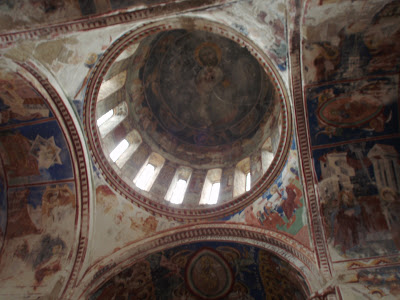
King David died on January 24, 1125, and was buried at the
Gelati Monastery (whose ceiling is pictured above). As he requested, he was buried under the stones of the gatehouse, so anyone coming to visit would first step on his tomb, an act of great humility from such an accomplished man.
A friend of the church and a promoter of Christian culture, David the Builder was canonized by the Georgian Orthodox Church.
The modern flag of Georgia began as the standard of King David and the Order of David the Builder is one of the most prestigious decorations awarded by Georgia. President Mikheil Saakashvili took his oath of office at the tomb of King David.
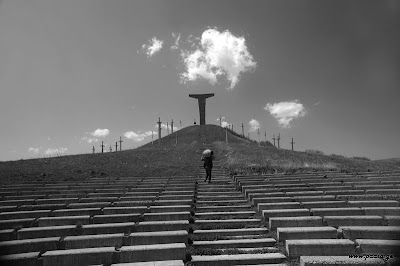
Memorial at Didgori
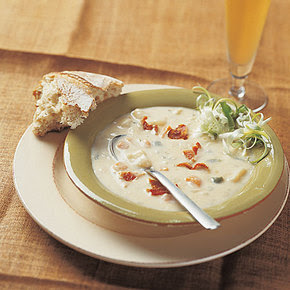 Today I discovered a wonderful blog of Georgian recipes, aptly titled Delicious Georgian Cuisine. I only regret that the blog had a rather short life and is no longer posting recipes. However, there are 48 on the website, and I'm looking forward to trying some. They run the gamut from soups and breads to meats and salads.
Today I discovered a wonderful blog of Georgian recipes, aptly titled Delicious Georgian Cuisine. I only regret that the blog had a rather short life and is no longer posting recipes. However, there are 48 on the website, and I'm looking forward to trying some. They run the gamut from soups and breads to meats and salads.
